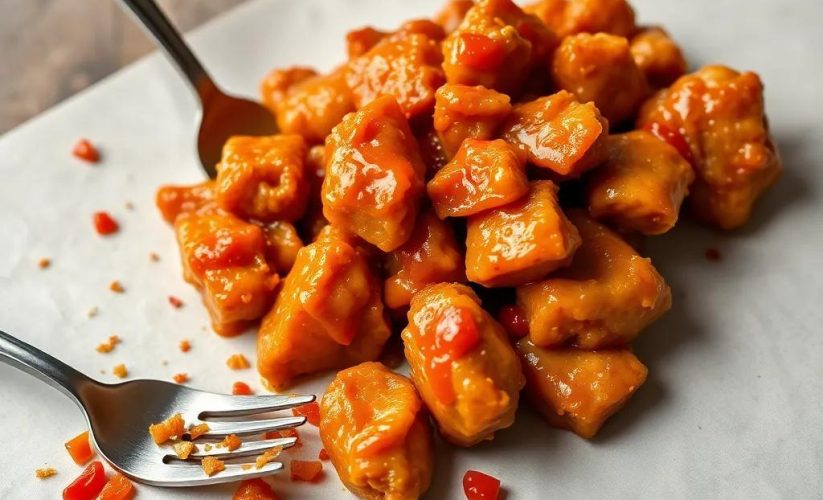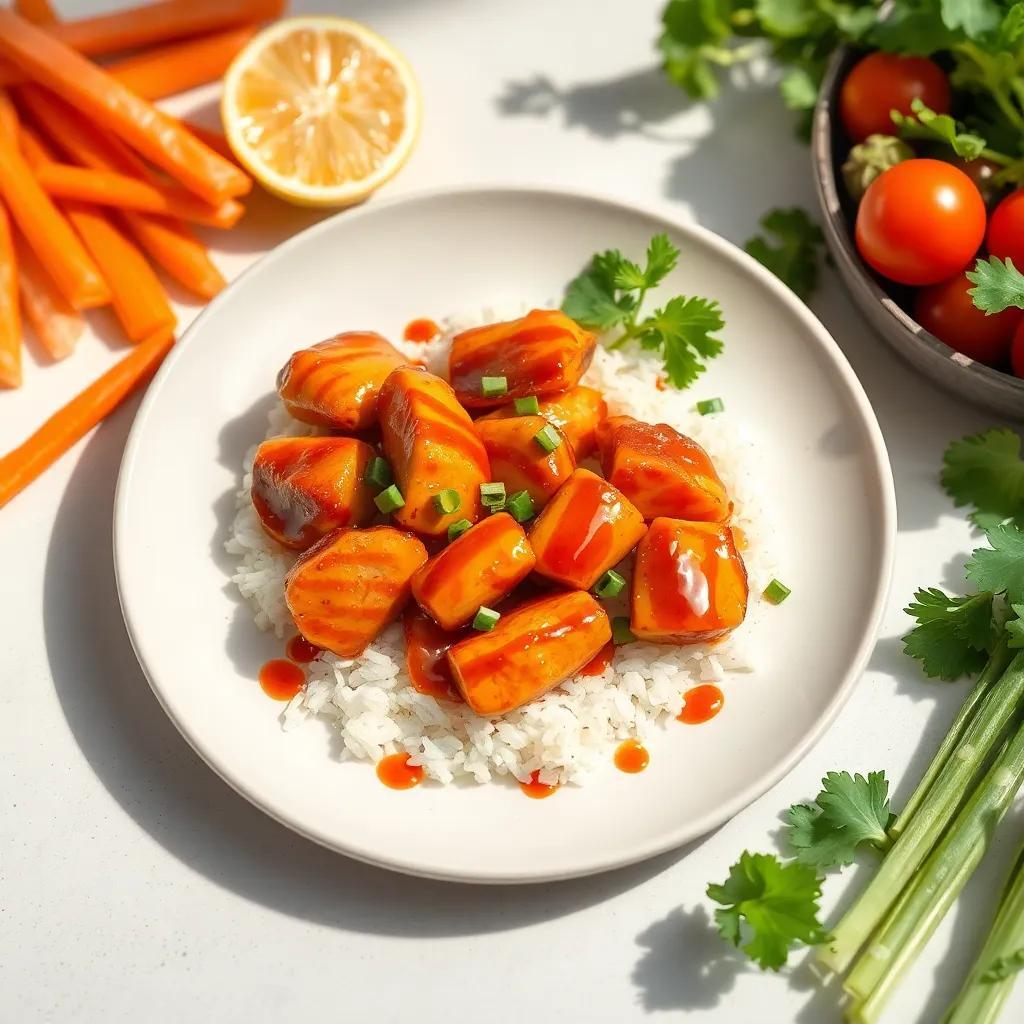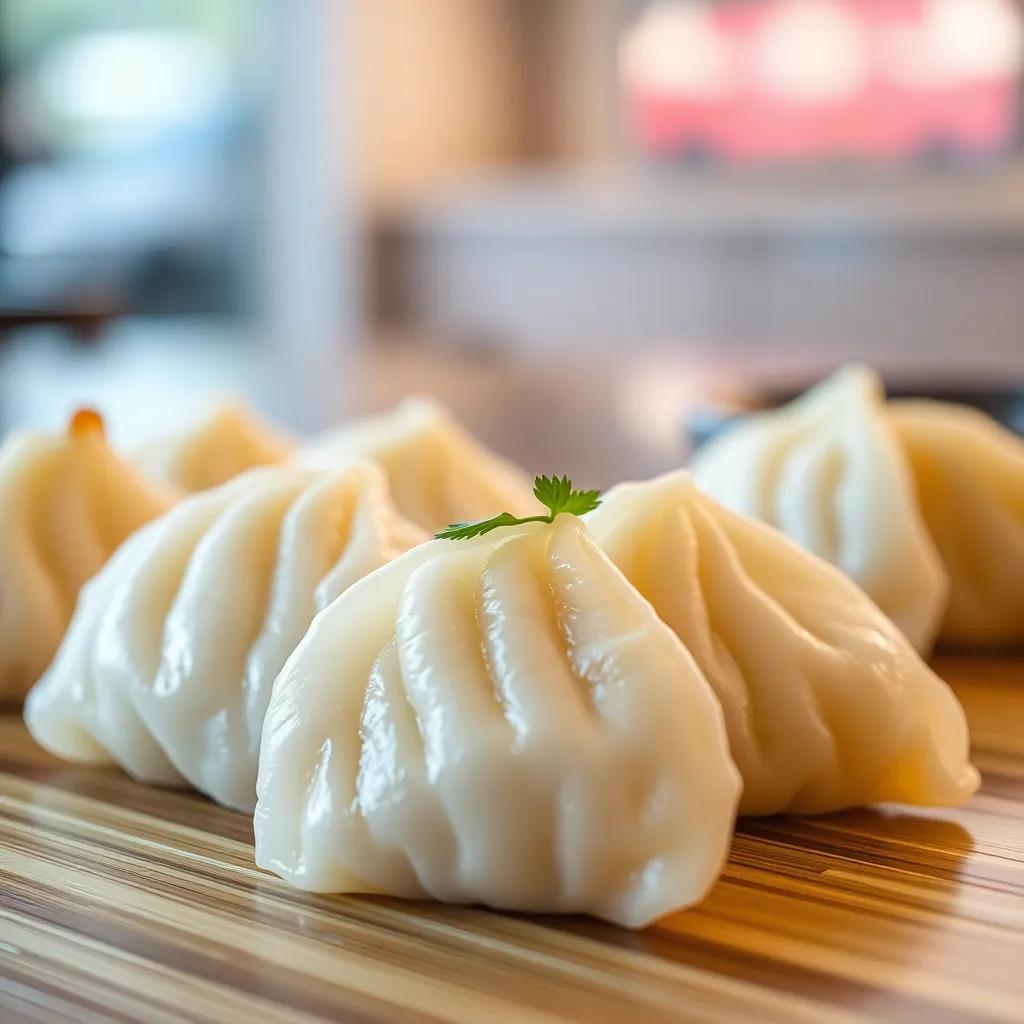Master the Art of Easy Sushi Rolls: Kid-Friendly & Gluten-Free Recipes

Master the Art of Easy Sushi Rolls: Kid-Friendly & Gluten-Free Recipes
🌍 Cuisine: Japanese
⚙️ Difficulty: Easy
Ingredients
Nutrition Facts
180
Instructions
- Rinse the sushi rice under cold water until the water runs clear to remove excess starch.
- Combine the rinsed rice and 1 ¼ cups of water in a rice cooker or pot. Cook according to your rice cooker instructions or bring to a boil then simmer for 15 minutes until water is absorbed.
- While the rice cooks, mix rice vinegar, sugar, and salt in a small bowl until dissolved.
- Once the rice is cooked, transfer it to a large bowl and gently fold the vinegar mixture into the rice to season it evenly. Allow rice to cool to room temperature.
- Prepare the fillings: julienne cucumber and carrot, slice avocado, and cook or prep any protein such as shrimp or chicken.
- Place a sheet of gluten-free nori on the bamboo rolling mat, shiny side down.
- With wet hands, spread a thin even layer of sushi rice over the nori, leaving about 1 inch at the top free of rice.
- Arrange fillings in a line roughly one inch from the bottom edge of the rice-covered nori.
- Using the bamboo mat, carefully roll the sushi away from you, applying gentle, even pressure to create a tight roll.
- Wet a sharp knife with water and slice the roll into 6 equal pieces. Clean the knife between cuts for best results.
- Repeat with remaining nori sheets and fillings.
- Serve rolls with gluten-free tamari soy sauce, wasabi, and pickled ginger on the side.
- Store any leftovers wrapped tightly in plastic wrap in the refrigerator for up to one day.
Serving Suggestions
- Serve sushi rolls with kid-friendly gluten-free dipping sauces like tamari mixed with a little honey.
- Pair with a side of miso soup or edamame for a complete meal.
- Include extra veggies like bell peppers or asparagus to add variety and color.
- Make a sushi roll party where kids can choose and assemble their own rolls.
- Serve with fresh fruit slices such as orange wedges for a balanced plate.
- Add a small bowl of gluten-free seaweed salad as a refreshing side.
- Use colorful vegetable tempura (gluten-free batter) as an appetizer alongside sushi rolls.
Table of Contents
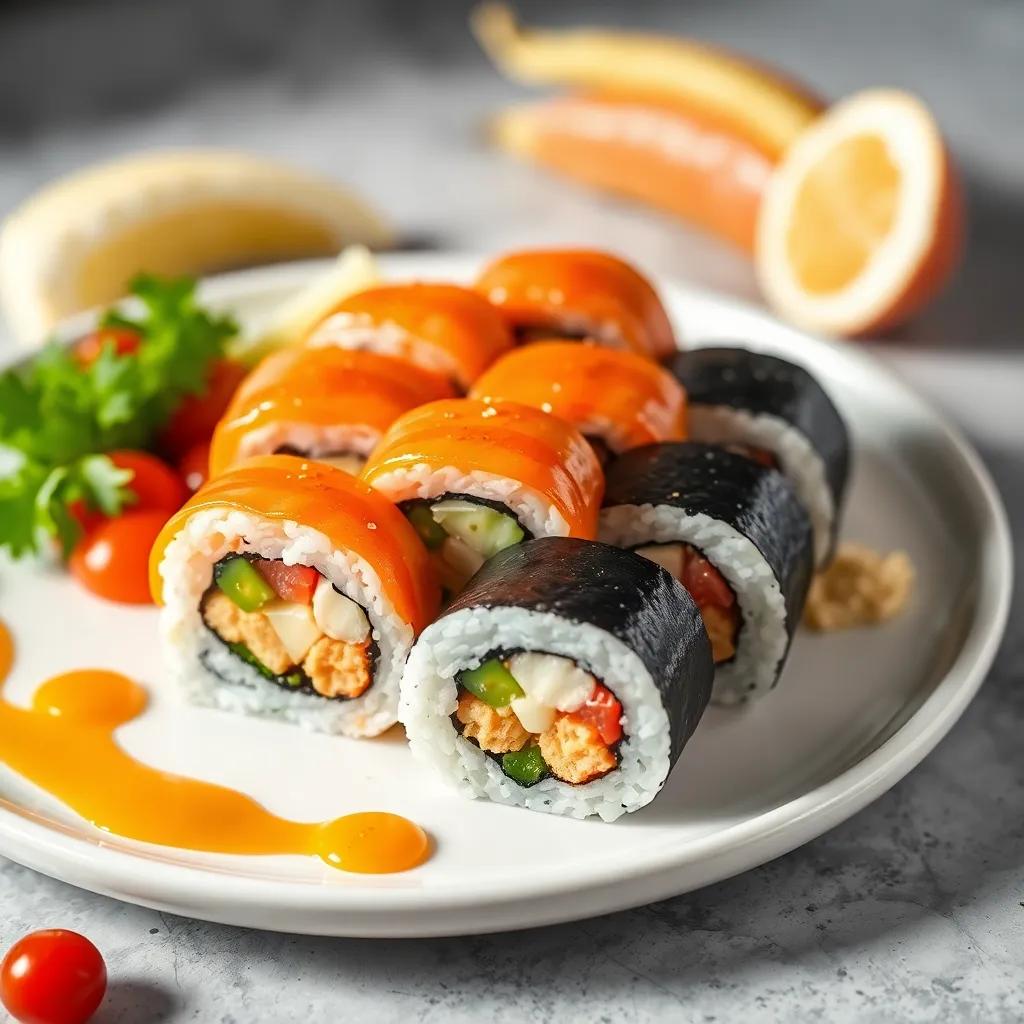
Intro
Sushi rolls can often seem like an intimidating culinary feat, but this recipe turns that notion on its head by making the art of sushi rolling approachable, fun, and, most importantly, kid-friendly. Whether you’re looking to duce little ones to new flavors or craft a colorful and wholesome meal that accommodates gluten-free diets, these easy sushi rolls bring everyone to the table for a shared food adventure. Their balanced blend of textures—soft rice, crisp veggies, creamy avocado, and tender protein—makes for a satisfying bite every time, without relying on complicated techniques or hard-to-find ingredients.
Perfect for casual family dinners, weekend cooking projects, or even small parties where kids and adults alike can roll up their sleeves and customize their own creations, these sushi rolls encourage creativity and hands-on involvement. They also fit seamlessly into various mealtime rhythms—serve them as a light main course, a playful appetizer, or a vibrant addition alongside miso soup and edamame. In any setting, these rolls deliver bright flavors and a nutritious boost, showing that wholesome meals can be as delightful to prepare as they are to eat.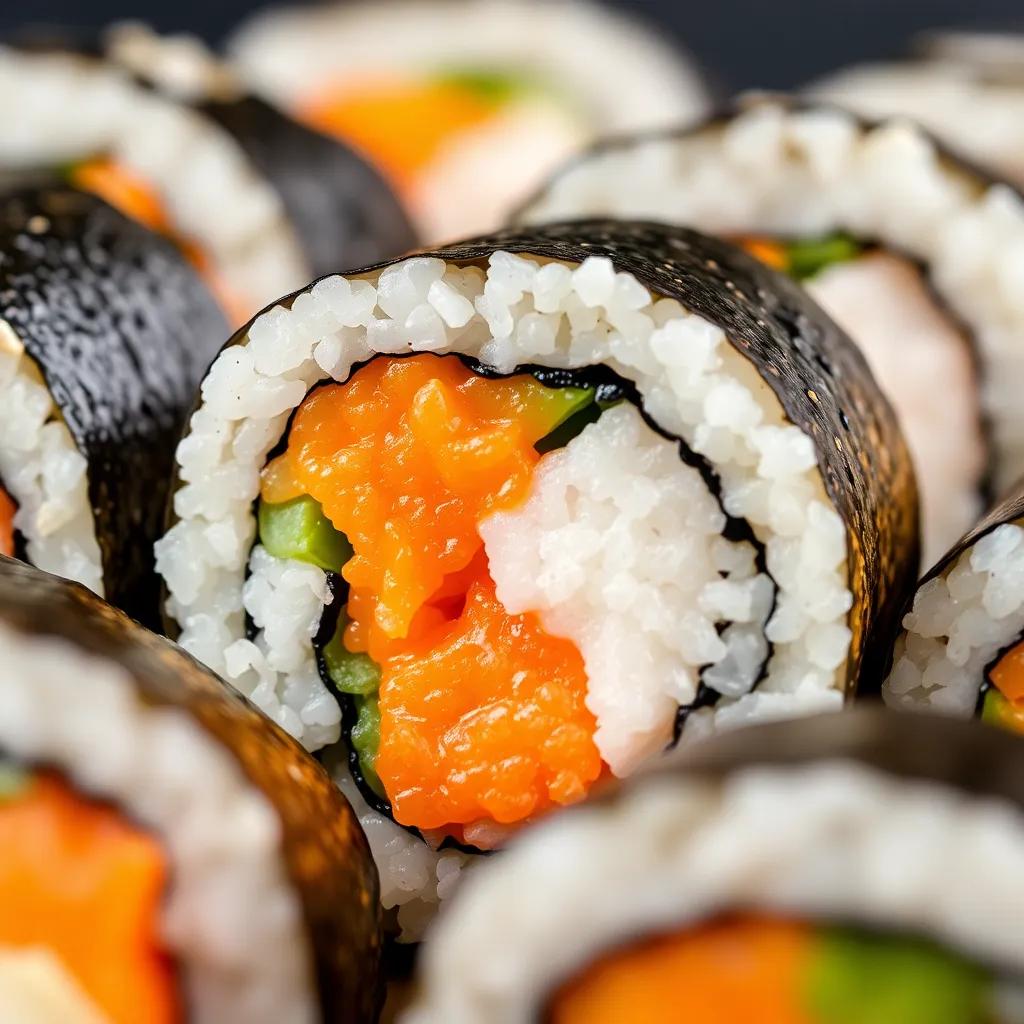
Ingredient Notes
When it comes to crafting perfect sushi rolls, a few key ingredients truly make all the difference—both in flavor and in ease of preparation. Understanding their unique qualities can help you choose the best options and feel confident in making substitutions if needed.
Sushi Rice (Japanese Short-Grain Rice): This rice is the foundation of any sushi roll. Its sticky texture allows the rice to cling together, making rolling simple and helping each bite hold its shape. When shopping, look for packages labeled “sushi rice” or “Japanese short-grain rice,” often found in Asian markets or well-stocked grocery stores. Avoid long-grain or basmati varieties, which won’t stick properly. If you can’t find sushi rice, a short- to medium-grain rice is the next best choice, though texture may vary slightly.
Gluten-Free Nori Seaweed Sheets: Nori provides not only structure but also a subtle umami burst that complements the fillings. For this kid-friendly, gluten-free recipe, ensure the nori sheets are certified gluten-free to avoid cross-contamination. Quality nori has a smooth, crisp texture and deep green-black color. Some brands offer flavored or toasted varieties, which can add a unique twist but may contain additives—so check labels carefully. If nori isn’t available, you can use thinly sliced cucumber or soy paper as creative wrappers, offering a fresh alternative that also appeals to kids.
Rice Vinegar (Gluten-Free): The magic that transforms plain cooked rice into sushi rice is a gentle seasoning of rice vinegar mixed with sugar and salt. Choose a mild, gluten-free rice vinegar that doesn’t overpower the rice’s natural flavor. Some rice vinegars are seasoned or have added salt and sugar—these can work but adjust the recipe accordingly. If rice vinegar is unavailable, a mild white wine vinegar can substitute in a pinch, though the taste will be less authentic.
Avocado: Creamy and mild, avocado lends a buttery texture that kids tend to love, balancing the crisp veggies and tender protein inside the roll. Select ripe avocados that yield slightly under gentle pressure but aren’t overly soft. If avocados are out of season or your little ones aren’t fans, substitute with ripe mango for a fruity touch, or thin slices of cooked sweet potato for extra comfort and sweetness.
By paying attention to these staple ingredients, you’ll set yourself up for sushi-making success, ensuring each roll is both delightfully flavorful and easy for little hands to enjoy. Remember, quality ingredients don’t have to be complicated or expensive—just thoughtfully chosen to bring joy around your family table.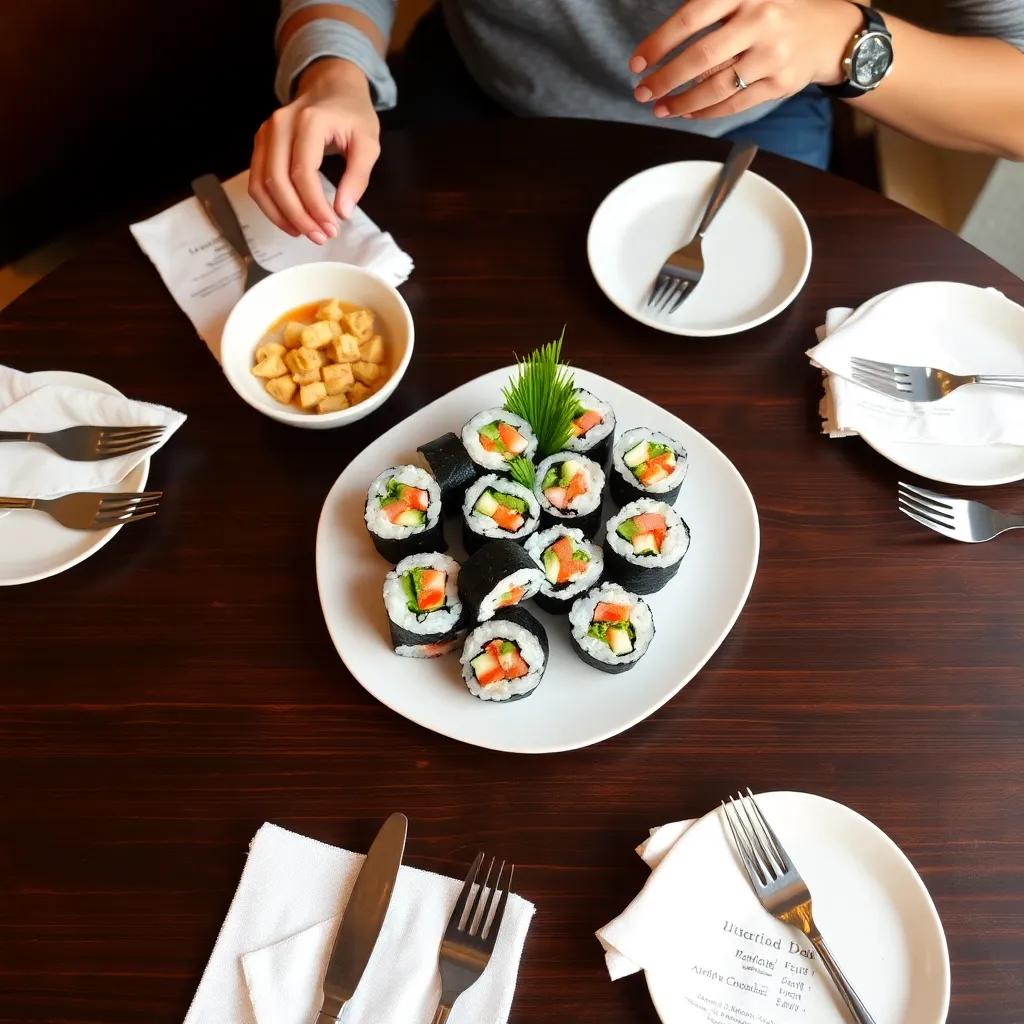
Tips & Variations
Mastering sushi rolling is as much about technique as it is about creativity and adapting to your family’s tastes and needs. Here are some helpful tips and inspired variations to elevate your experience and keep everyone happily engaged:
- Get Comfortable with the Rice Texture: Sticky sushi rice is key to neat rolls, but it can be tricky for little fingers. If kids are helping, lightly wet their hands with water or a vinegar-water mix before handling the rice to prevent sticking and frustration. For an even easier approach, prepare the rice the day before and refrigerate it uncovered to reduce tackiness, then bring to room temperature before rolling.
- Keep Your Rolling Mat Clean and Flexible: Bamboo mats tend to absorb moisture, which can cause rice to stick and rolls to tear. Cover your rolling mat with cling film/plastic wrap before each roll, especially when making multiple batches. This helps maintain smooth rolling and makes cleanup effortless.
- Customize Fillings to Engage Kids: Tailor sushi rolls to suit your children’s preferences by experimenting with a variety of colorful, mild ingredients. Sweet bell peppers, shredded cooked sweet potato, or thin apple slices can add sweetness and crunch. If your kids are adventurous eaters, try mild cheeses like cream cheese or even gluten-free deli meats for a playful twist.
- Protein Swaps for Dietary Needs and Preferences: While the recipe uses shrimp or chicken, consider plant-based proteins like marinated tofu strips, cooked edamame, or tempeh for vegan options. Smoked salmon (check for gluten-free certification) or canned tuna mixed with a little gluten-free mayo provides rich flavors for older kids. These swaps keep it fun while meeting dietary restrictions.
- Rice Paper or Soy Paper Wrappers: If gluten-free nori isn’t a favorite or you want to offer variety, try rice paper wraps (typically used in Vietnamese rolls) or soy paper sheets. These alternatives are often easier for kids to bite through and add a fresh texture contrast. Just note, rice paper requires dipping in water to soften and can feel different than the traditional nori.
- Play with Roll Shapes and Sizes: Mini sushi rolls or “sushi bites” can be less intimidating and more manageable for little hands and beginners. Simply cut rolls into smaller pieces or omit rolling entirely to make “deconstructed sushi bowls” where kids can scoop their favorite components with chopsticks or spoons.
- Gluten-Free Dipping Sauce Ideas: While gluten-free tamari is the classic choice, try mixing tamari with a touch of honey to sweeten it up for kids. Alternatively, a simple homemade dipping sauce combining rice vinegar, a dash of toasted sesame oil, and a pinch of sugar can pleasantly surprise young palates.
- Add a Crunch Factor: Include gluten-free tempura flakes or crushed gluten-free rice crackers inside or on top for texture variation that kids often find fun. This boosts both flavor and visual appeal.
- Make It a Learning Experience: Turn sushi rolling into an interactive cooking lesson by teaching children about Japanese culture, the importance of balanced nutrition, or the origins of each ingredient. This enriches the mealtime experience beyond just eating.
By keeping things flexible, playful, and mindful of dietary needs, these sushi rolls can become a beloved family tradition that inspires creativity and confidence in the kitchen. Whether you stick to the basics or venture into imaginative combinations, every roll offers a chance to make mealtime joyful and inclusive.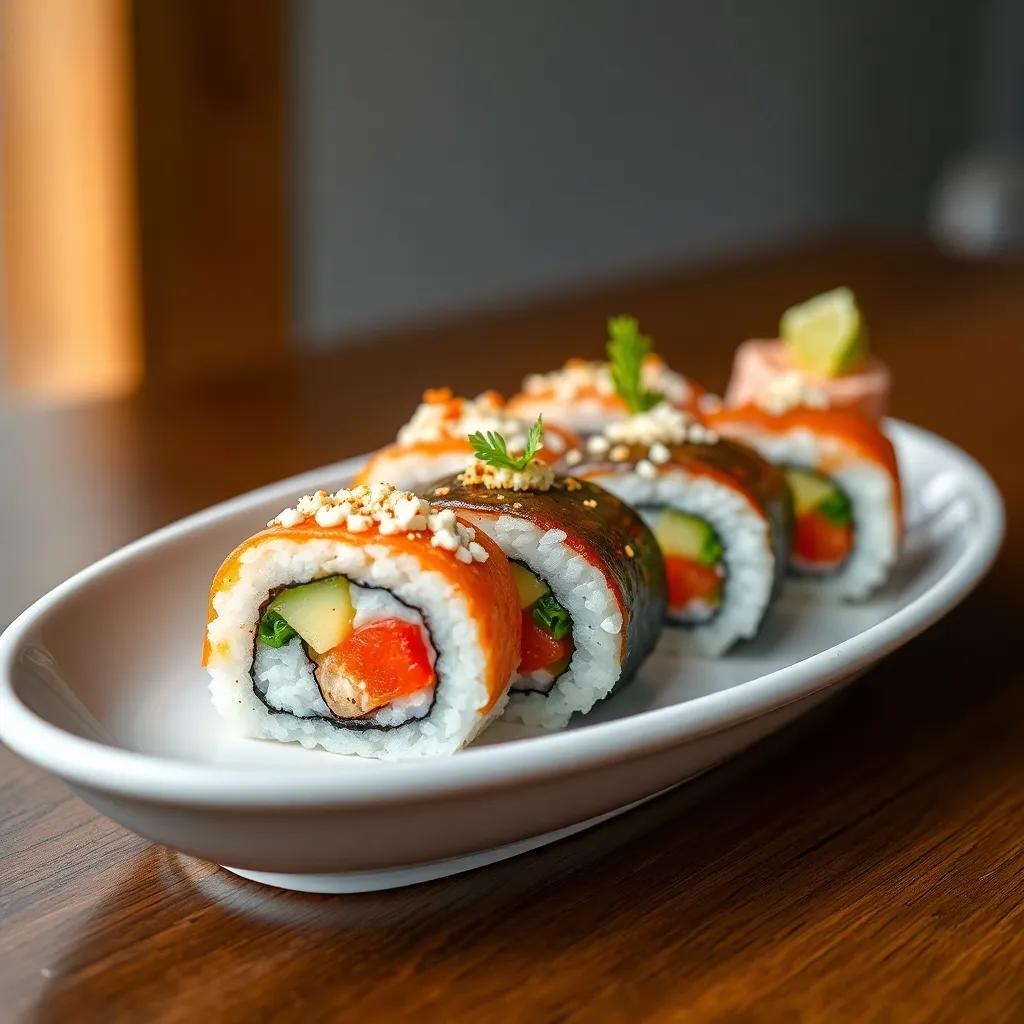
Leftovers & Storage
When it comes to storing your kid-friendly, gluten-free sushi rolls, keeping them fresh and tasty requires a bit of care, but it’s entirely doable—even if you’re meal-prepping or packing lunches ahead of time. Because sushi rice tends to dry out and nori can become soggy, following these storage tips will help maintain the best texture and flavor for your leftovers.
First, wrap each sushi roll tightly in plastic wrap or place them in an airtight container right after assembling. This airtight seal slows moisture loss and prevents the rice from hardening. Store the wrapped rolls in the refrigerator, where they will stay fresh for up to 24 hours. Beyond that, the rice texture noticeably deteriorates, and the nori loses its crispness, so it’s best to enjoy leftovers the same day.
If you plan to pack sushi rolls for school lunches or on-the-go snacks, keeping the rolls chilled in an insulated lunchbox with ice packs is essential to ensure food safety, especially if protein is involved. To prevent the rolls from sticking together inside the container, separate layers with parchment paper or use individual silicone baking cups. When packing, consider including a small dipping sauce container with gluten-free tamari or a kid-approved alternative so the rolls stay intact until eating.
Freezing homemade sushi rolls isn’t generally recommended, as the delicate balance of rice and fresh veggies doesn’t fare well under freezing conditions, often resulting in a mushier texture upon thawing. However, if you want to meal prep components in advance, cooked proteins and julienned vegetables freeze well separately and can be quickly thawed and assembled with freshly made rice and nori.
If you find yourself with excess sushi rice, rather than storing it in rolls, keep it in a shallow airtight container at room temperature for a few hours or in the fridge if for longer, then reheat gently with a sprinkle of water to restore moisture before using it in other dishes like rice bowls or onigiri—allowing no more than one day for refrigeration.
In short, because sushi rolls shine brightest when freshly made, plan to eat leftovers within a day for the best experience. With proper wrapping, refrigeration, and careful packing, your kid-friendly gluten-free sushi can remain a convenient, delicious treat that fits into busy family life without losing its charm.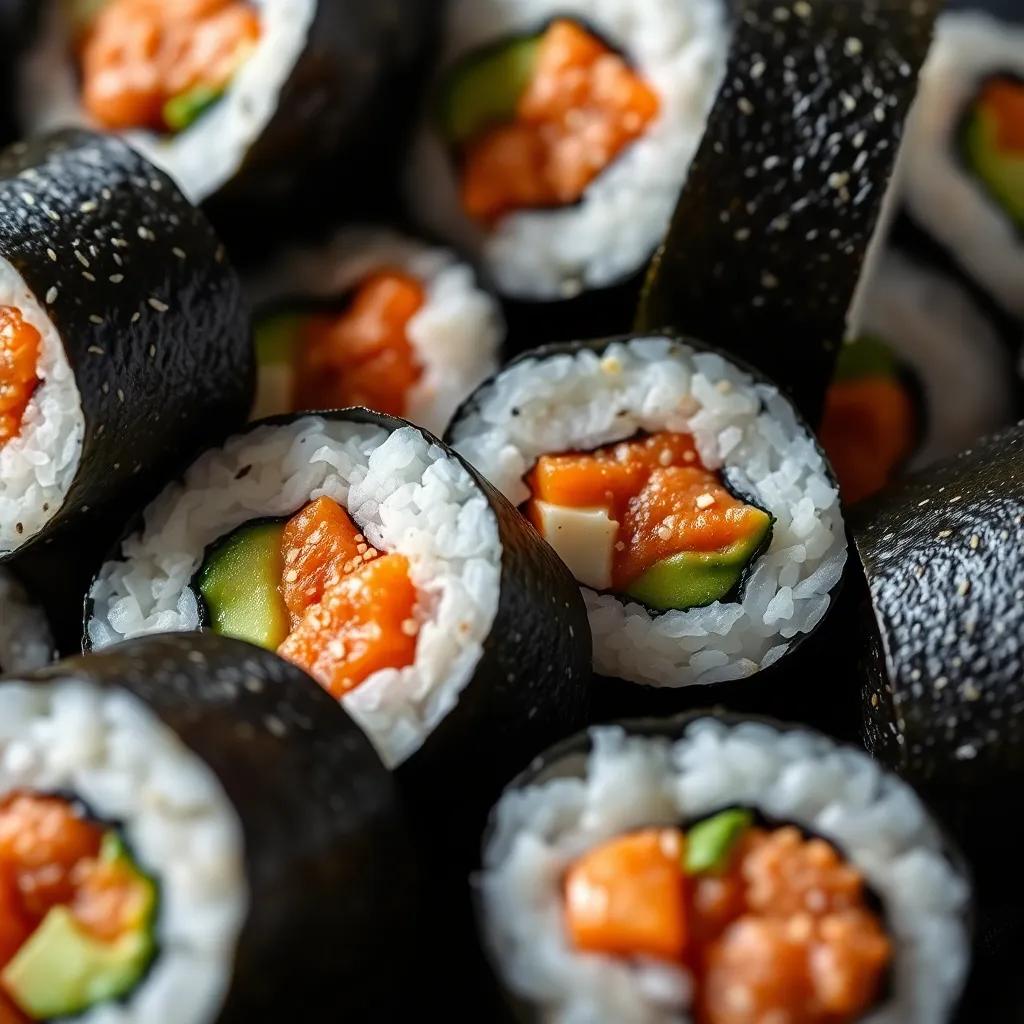
Behind the Recipe
Sushi, with its delicate balance of flavors and textures, carries a rich heritage that stretches back centuries in Japan. Originally a method of preserving fish in fermented rice, sushi evolved over time into the fresh, vibrant cuisine we enjoy today. This recipe embraces that tradition but adapts it with a modern, family-friendly twist—making sushi not just a gourmet experience but a playful kitchen adventure accessible to kids and those with gluten sensitivities.
The inspiration for these easy sushi rolls came from the desire to demystify sushi-making for home cooks, especially families eager to explore new tastes without fuss or exotic ingredients. Growing up, many experienced sushi as a special outing or expensive treat, often intimidating because of the knife skills or rare components involved. This recipe breaks down those barriers by focusing on simple, wholesome fillings and gluten-free essentials, encouraging hands-on involvement from little ones and novices alike.
Using familiar veggies like cucumber and carrot alongside creamy avocado and mild proteins helps create approachable flavor profiles that kids can enjoy without being overwhelmed by strong seafood tastes or complex textures. The choice of gluten-free nori and tamari soy sauce reflects a thoughtful inclusion for those with dietary restrictions, illustrating how traditional cuisine can be lovingly modified to bring everyone to the table.
The bamboo rolling mat, an iconic tool in sushi preparation, adds a tactile dimension that children find fun and engaging. Watching plain ingredients transform into colorful, neatly rolled bites offers both visual delight and a sense of accomplishment. Many families find that making sushi together sparks curiosity about Japanese culture and culinary arts, turning mealtime into an interactive, educational ritual.
Ultimately, these sushi rolls are more than just a recipe—they’re a bridge connecting culinary tradition with modern family life. They embody the idea that cooking can be joyful, inclusive, and nourishing, inviting cooks of all ages and backgrounds to master the art of sushi in a way that feels easy, safe, and deliciously rewarding.
FAQ
Can I use other types of fish or proteins in these sushi rolls?
What’s the best way to keep sushi rolls fresh if I want to make them ahead?
How can I make the sushi rolls gluten-free?
Can I add veggies other than cucumber and avocado to the rolls?
Is it okay to eat these sushi rolls cold, or should I warm them up?
What can I use instead of nori sheets if kids don’t like the seaweed taste?
Wrapping It Up
There’s something truly special about rolling up your own sushi—especially when it’s simple, kid-friendly, and gluten-free. These easy sushi roll recipes not only bring a burst of fresh flavors to your table but also invite you to get creative and enjoy quality time with loved ones. Whether you’re a seasoned sushi fan or just starting out, these rolls make a delicious, approachable way to explore new tastes together.
We’d love to hear how your sushi adventure goes! Feel free to leave a comment, rate the recipe, or share your own unique twist on these rolls. After all, cooking is best when it’s shared—so roll up your sleeves and dive in!


